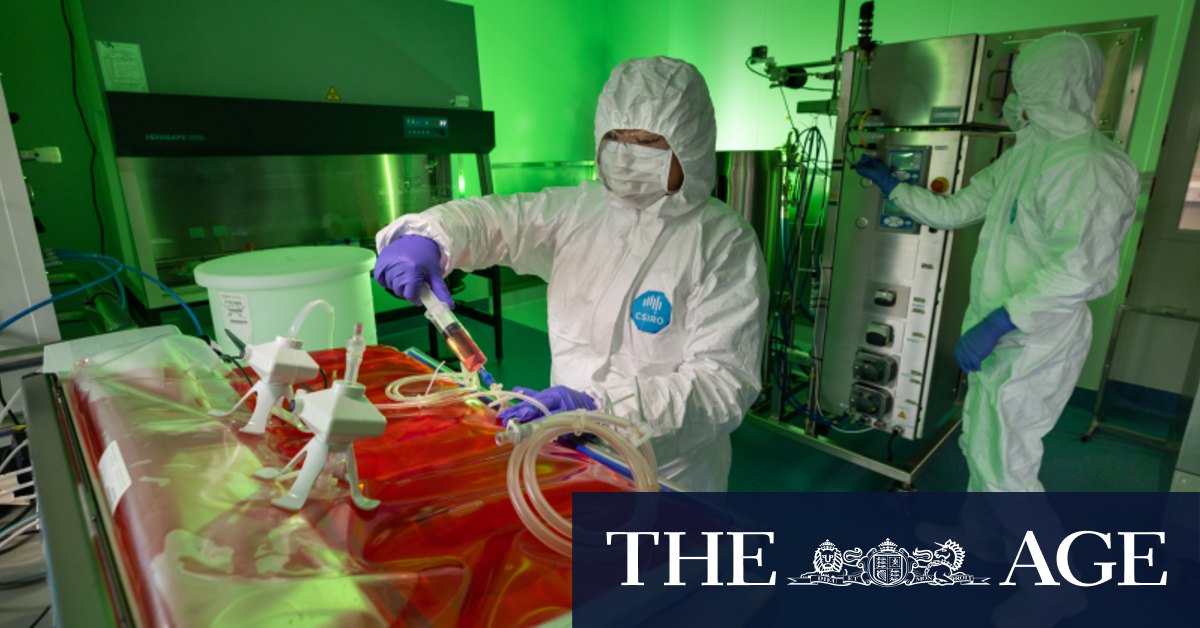With this new facility, plus Moderna’s under-development RNA plant in Victoria, Australia’s vaccine infrastructure has received a major shot in the arm.
The new biosecurity level-2 facility sits behind a series of airlocks; workers have to dress in full suits to go inside. “This place is cleaner than an operating theater,” said John Power, group leader of regulated biomanufacturing.
The lab makes protein and viral vector vaccines – the technologies used in Novavax and AstraZeneca’s jabs. The vaccines are grown by vast armies of cells housed in huge steel vats known as bioreactors.
The cells are given the genetic code for what needs to be produced: perhaps a viral protein, or even a whole antibody. They churn the product out en masse, before it is filtered out, purified, and filled into vials.
The genetically-modified cells arrive frozen in a tiny vial at Clayton; the team carefully thaw them and then grow them to up to 200 litres.
loading
The process is like tending to a plant – the researchers carefully tweak temperature and oxygen levels to get the cells to grow at their best.
When CSL was making the AstraZeneca vaccine, these processes hadn’t been perfected, leading to the first batch of vaccine being lower than was expected. CSIRO’s lab will specialize in perfecting that process before it goes into large-scale manufacture.
“If we get another pandemic, we should be in a much better place,” Nilsson said.
The facility also comes with machinery to fill vaccines into vials, ready for use in clinical humans.
loading
Facilities like this exist in Australia but are generally only for large runs.
“Facilities like this offer an opportunity for co-development, and that really high-quality manufacturing that is needed for clinical trials,” said Professor Trent Munro, one of the developers of the University of Queensland’s COVID vaccine and now program director for the internationally funded vaccine rapid response pipeline.
“All too often, researchers fail to understand just how complicated this early-stage manufacturing is. There’s a temptation to try to find ways to do it super-cheap and super-quick. We need all three – quick, cheap, and high quality.”
The facility can do both vaccines and drug therapies. It is already working on an antibody therapy for a university researchers declined to name.
Liam Mannix’s Examine newsletter explains and analyzes science with a rigorous focus on the evidence. Sign up to get it each week.
